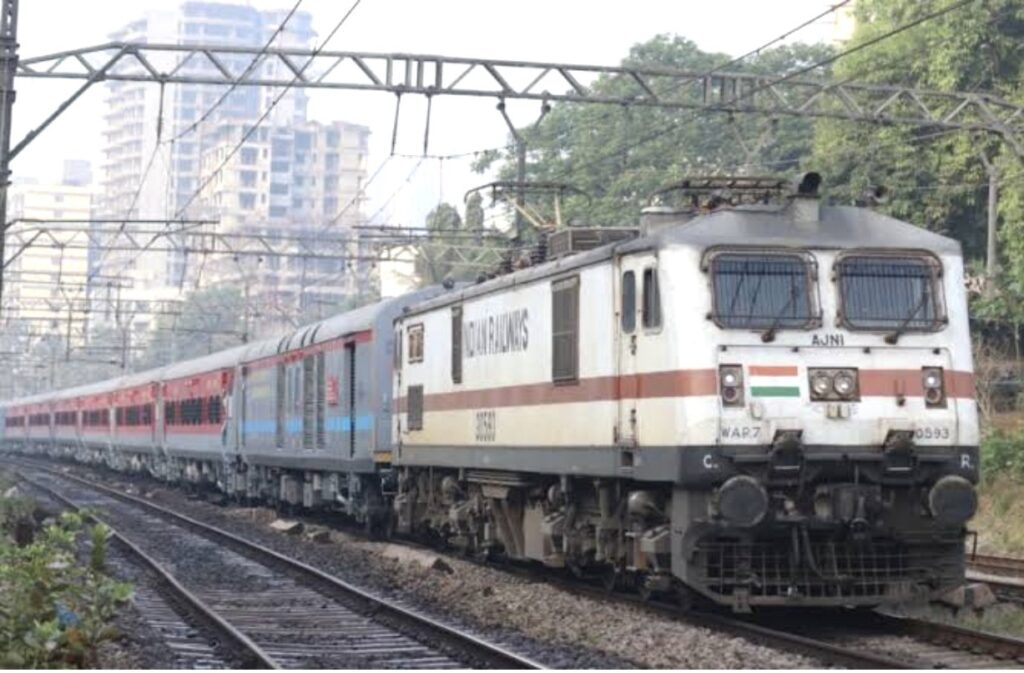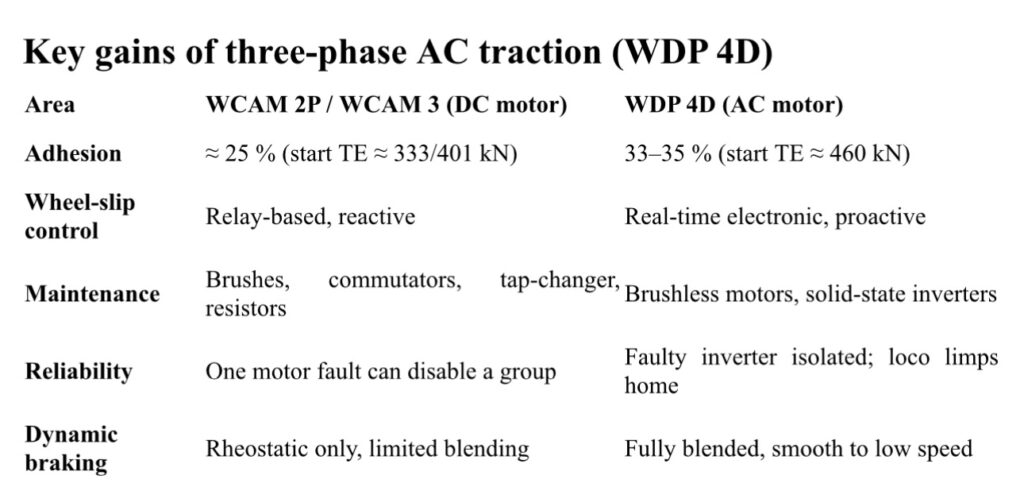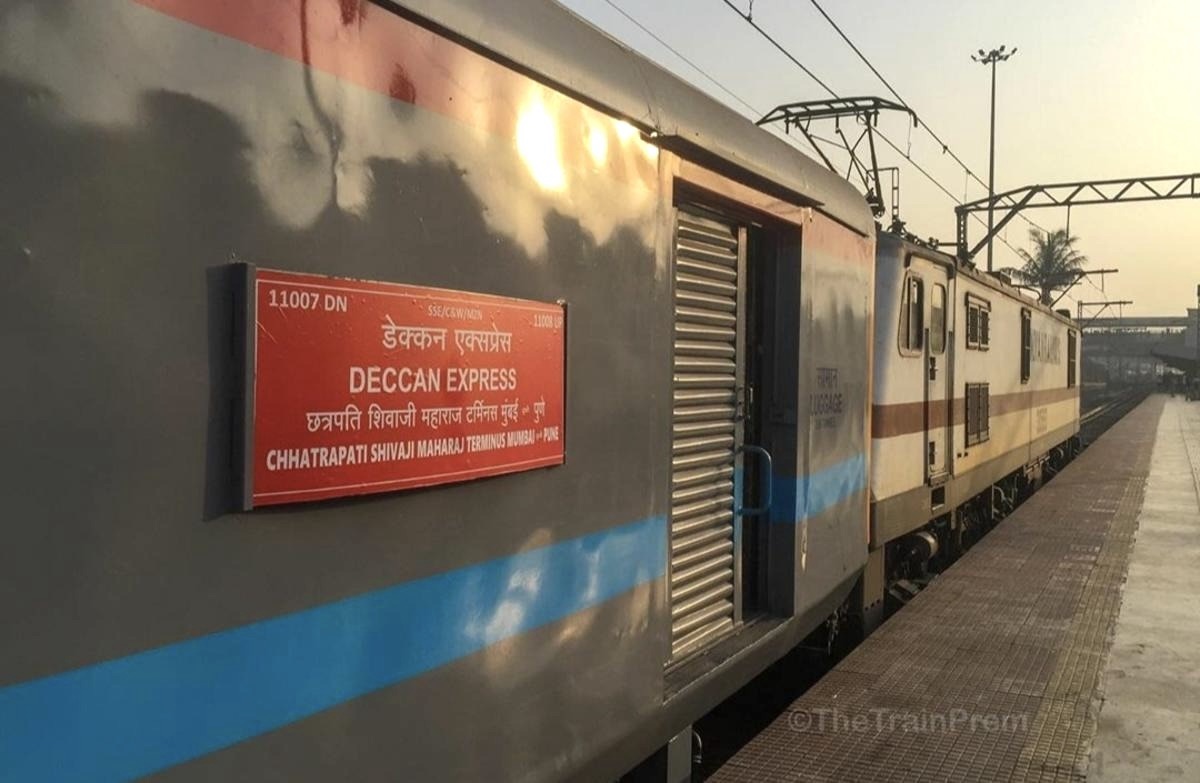Case for Diesel Traction on Deccan Queen-A Rail Enthusiast’s View
Editorial Comment: We are pleased to present an article submitted by a passionate young rail enthusiast, a recent graduate of Gati Shakti Vishwavidyalaya (#GSV). In his piece, he offers a counter-argument to the criticisms regarding the #transition of the #DeccanQueen to #diesel-traction. In our commitment to supporting emerging voices and their analytical endeavors, we have decided to publish his article in its original form. It is important to note that, as an editorial team, we maintain neutrality concerning modes of traction; our priority lies in supporting what is most beneficial for the country!
-Saurya Basu
We have a lot of myths and opinions disguised-as-facts floating around the railway circles of Mumbai about the #traction change of Deccan Queen Express and few other Pune-Mumbai trains, from #electric to #diesel. It’s time to set the record straight.
Punctuality: The running time and punctuality of the train remains unaffected. The traction change does not make any difference to a passenger at all, he or she boards and deboards at the same time as before. The change of traction is an internal matter of the railway.
Power car: Contrary to popular opinion, there is no additional diesel consumption due to the power cars being switched on. They were never switched OFF in fact. #WCAM-2P or #WCAM3 electric locos, which were used before the switchover, do not have a Hotel Load facility. Hotel Load is the ability of the #loco to produce its own electrical power for the electricity consumption of coaches, like lighting, air conditioning, etc.
Fleet utilisation: The Operating Department of Central Railway has taken a commendable step to utilise their underage diesel fleet. With rapid electrification, suitable passenger electric locomotives are not always available as per demand. We have had goods electric locos like #WAG5 and #WAG9 operating passenger trains after electrification of #KonkanRailway, as many Central Railway-owned trains pass through Konkan Railway.
The loco for such trains is also provided by Central Railway. Goods electric locos are restricted to 100 or 105 km/h and often take more time to cover a stretch. The WDP-4D diesels are passenger locos, hence they can haul trains at 110 km/h or 130 km/h as the case may be. Of late, a senior officer of the Traffic Transportation Directorate of #RailwayBoard had instructed all zones to stop #WAG9 goods electric locos from being allotted to passenger trains, and if at all the need arises, the personal approval of the Principal Chief Operations Manager (#PCOM) of the zone must be taken. This was issued in light of the fact that many goods trains were stranded at yards and sidings of Indian Railways for want of goods locos, be it electric or diesel.
The #PCOM and the Chief Passenger Transportation Manager (#CPTM) of #CentralRailway need to be commended for choosing the appropriate type of loco for #coaching service, until adequate #WAP7 locos are available. The punctuality of the trains, especially in a crowded sector like Mumbai-Pune, would have been adversely affected if goods electric or goods diesel locos had been allotted. Credit where it’s due.
As of 1st April 2025, Central Railway has 38 #WDP 4D locos, which can suitably be used for trains which are running on goods electric locos at present. For short distance or shuttle trains, they can be useful.

Better haulage: As compared to WCAM-2P and WCAM3, WDP-4D has both better maximum tractive effort and continuous tractive effort. In a section like Mumbai-Pune where steep gradients are aplenty, higher tractive effort is an advantage and crucial to operations, as compared to higher power. This is due to frequent braking and acceleration. Tractive effort is the force applied to overcome the inertia of the train. Higher the value, the faster and easier a train can move from standstill. Wheel slip is also prevented greatly. The steepest gradient in the Chhatrapati Shivaji Maharaj terminus – Pune Junction route is 1 in 37 between Monkey Hill Cabin and Khandala, while going towards Pune.
Newer technology: WCAM-2P and WCAM3 were built for Mumbai’s former 1.5 kV DC / 25 kV AC network. Both keep six series-wound DC traction motors and simply rectify the AC supply to feed them, relying on tap-changer transformers, rectifiers and resistor notching. The architecture gives good low-speed pull but suffers from wheel-slip, step-wise power control, heavy maintenance (brushes, commutators, multiple contactors) and lower efficiency—especially in DC mode.
The WDP-4D, by contrast, is a dual-cab diesel-electric using a modern AC-AC drive: a three-phase alternator, a DC link and six independent #IGBT-based inverters feeding squirrel-cage induction motors. Each motor is controlled separately, so a single failure merely reduces power instead of stopping the locomotive. High-frequency #IGBT switching delivers fine torque control, excellent adhesion, smooth 0-100% speed regulation and blended dynamic braking.

WCAM-2P and WCAM-3 were introduced in the 1990s, designed for the Mumbai region’s specific needs at the time, combining both AC and DC traction capabilities. They’ve served admirably through decades of service, but age is a factor. The #technology powering them, though effective in its day, is now somewhat dated in comparison to newer advancements. On the other hand, the WDP-4D, a more recent addition to the fleet, was introduced in the mid-2000s and is far younger, with a more modern AC-AC drive system that offers superior efficiency and performance.
Additional operational bonuses of WDP-4D include air-conditioned dual cabs, ergonomic #LCD desks and onboard diagnostics that cut crew fatigue and simplify troubleshooting. Taken together, the AC-AC platform offers higher tractive effort, lower life-cycle cost and greater network flexibility, explaining #IndianRailways’ shift to all-AC electrics and AC-AC diesels while retiring or de-rating the WCAM fleet, whose dual-voltage role ended once the Mumbai area converted to 25 kV AC.
Closing remarks: I have written this as an observer and student of railways. I do not claim to be a self-proclaimed “rail expert” as some who inaccurately position themselves as one. The #Queen is still Queen, her glamour and popularity are not dependent on choice of #traction. Rather, it is the goodwill and continued patronage of passengers, combined with the dedication of Central Railway staff and officers that make her what she is.
#SouryaBasu is a graduate of GSV, Vadodara
Train Journey: Train 12124, Pune-CSMT Deccan Queen Express. Presented by #IndianRailways.
Photo credit (top): Pune Pulse


